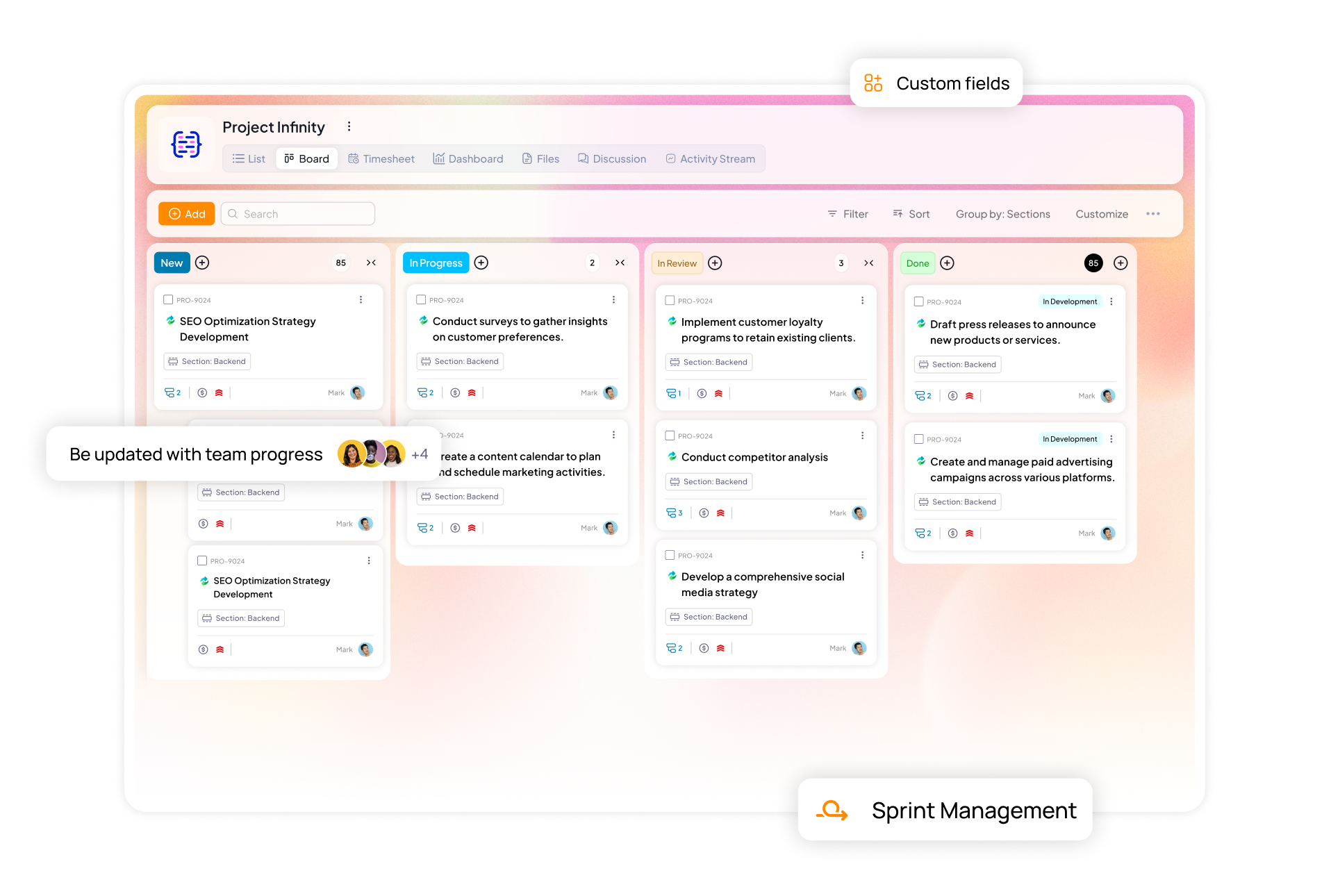Marketing projects aren’t Jenga… but sometimes they topple like one.
Some delays feel inevitable in marketing, like edits that arrive too late, or assets that go live missing the nuance discussed in last week’s call. But when those moments keep repeating, they point to something deeper—a lack of operational clarity.
Often, marketing team communication breakdowns come from invisible gaps between tools, between intention and action. And over time, they create drag and stall projects.
This article doesn’t promise you a fix-all. But it does offer a lens into the patterns that slow even seasoned teams down, and how small, intentional shifts (and smarter tools) can bring clarity back.
Understanding the warning signs: Is your marketing team’s communication faltering?
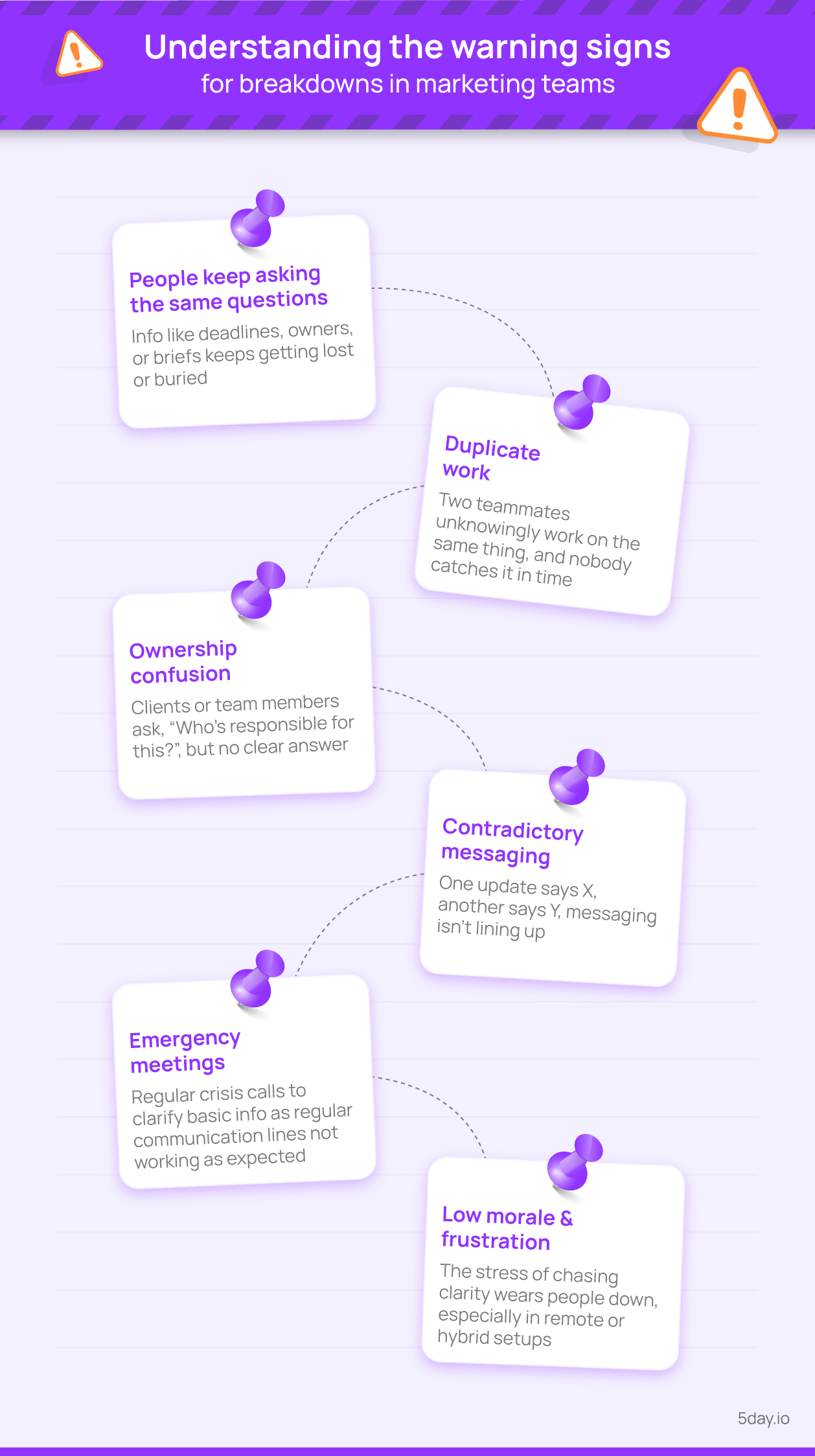
Recognizing early warning signs of communication breakdown in marketing team can help you resolve them before they become costly hurdles. Before we dive into specific marketing communication problems, look for these red flags in your day‑to‑day workday:
1. Repeated questions about the same details
When people keep asking for info that should be immediately accessible, it means your information is scattered or unclear.
2. Tasks getting duplicated
If two teammates unknowingly work on the same deliverable, you’ve likely hit an information‑sharing gap. Duplication of work drags deadlines and wastes resources.
3. Clients or stakeholders asking, “Who owns this?”
Frequent confusion over responsibility erodes trust and slows every handoff.
4. Contradictory updates or messaging
Conflicting briefs or emails signal that alignment isn’t happening at the right time. Occasional misunderstandings are normal. But if this is happening often, it’s a clear red flag.
5. Last‑minute “emergency” meetings
Regular crisis calls to clarify basic details show your regular channels aren’t keeping up. It creates unnecessary stress on the team and makes chaos look visible.
6. Sapped morale and creeping frustration
According to a Grammarly report, more than 9 in 10 business leaders agree that poor communication drowns their productivity, morale, and growth.
Remote and hybrid setups can amplify these marketing team communication issues. Owl Labs suggests that miscommunication is one of the biggest concerns for remote team managers.
Spotting these signs early gives you the chance to smooth out how your team shares information and keeps everyone moving in the same direction.
The top 5 communication breakdowns in marketing teams (and how to fix them)

Communication breakdowns in marketing stem from the disrupted flow of context and feedback across strategy and execution.
Let’s learn about the top five friction points that often show up in otherwise capable teams. And more importantly, how to tackle them with clarity and confidence.
Breakdown 1: Siloed information & lack of transparency
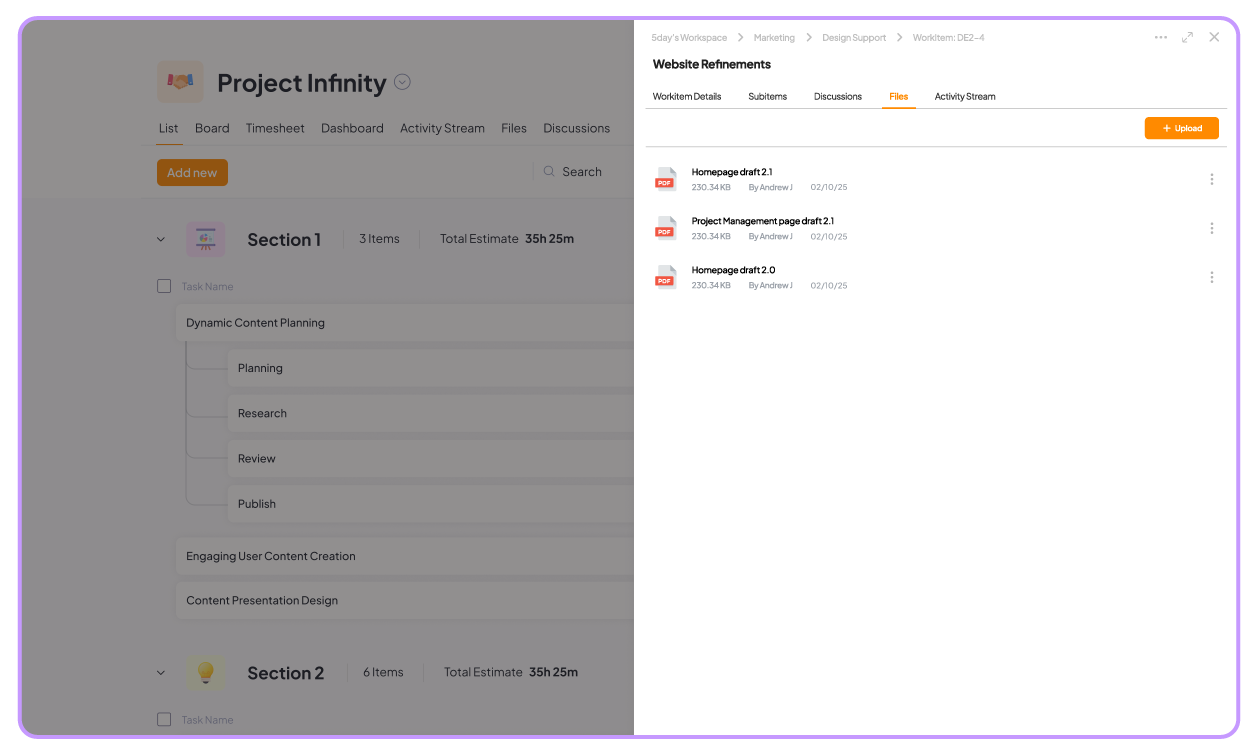
When different teams or individuals use siloed tools and processes, information stays trapped. One team might be finalizing assets, unaware that messaging has changed. Someone’s updating timelines, but no one sees it until it’s already outdated.
How it impacts teams:
This disconnect slows progress and multiplies rework. Team members make decisions based on incomplete or outdated information. Duplication becomes a common issue. Small oversights snowball into misaligned campaigns or last-minute disorder.
How to fix it:
Break the cycle and preventing silos in marketing teams by establishing a single, shared source of truth.
Here, tools like 5day.io project management software help by consolidating files, updates, timelines, and feedback into one centralized workspace. With board and list views, information becomes accessible and actionable.
Pro tip: Create a shared dashboard for every campaign with tagged sections for content and performance. That way, everyone knows where things stand without asking each other.
Breakdown 2: Unclear roles, responsibilities, and expectations
Work and ideas move quickly in marketing. And when ownership is vague, it’s easy for tasks to slip or for two people to unknowingly work on the same thing. This is especially common in teams where roles overlap, or priorities shift often.
How it impacts teams:
Unclear ownership creates bottlenecks, and teams often miss delays until it’s too late. Teams burn time chasing approvals that were never assigned. Over time, it creates confusion, stress, and inconsistent output.
How to fix it:
Make roles and expectations part of the workflow, not a side conversation. In 5day.io, you can assign tasks (and subtasks) to specific people and track progress visibly. Custom workflows help each phase have a defined owner and reviewer.
Pro tip: Use 5day.io’s role-based permissions to ensure only the right people edit high-visibility sections, while still giving others visibility to avoid blind spots.
Breakdown 3: Ineffective feedback loops (or lack thereof)
Marketing is collaborative by nature. But if feedback is scattered across email threads or missed entirely, teams lose momentum. Vague or late-stage edits often result in backtracking and duplication of work. Often, this leads to rushed chasing and dilution of creativity.
How it impacts teams:
Without clear feedback loops, execution stalls. Creative teams second-guess direction, and strategic shifts fail to reach production. Consequences of poor communication in marketing? Clients notice the cracks, which erode trust.
How to fix it:
Build structured feedback into your delivery process. Use the right marketing team collaboration tools to comment live directly on tasks or deliverables, tied to timelines. It’s also important to map review cycles into workflows with status changes triggering feedback requests.
Pro tip: Set agreed-upon timelines for feedback on windows and approvals. Tag reviewers directly on tasks so they’re notified in real time and define response timelines upfront to avoid bottlenecks.
Breakdown 4: Choosing the wrong communication channels/tools
Not every conversation belongs in email. And not every decision should be made in a Slack message. When communication happens in tools that don’t support the context or structure required, details get lost or misinterpreted.
How it impacts teams:
Team members lose track of information when it’s buried in the wrong tools, forcing them to chase updates. Even when people try to stay aligned, poor tool choices make it harder to communicate clearly. As frustration grows, teams waste their precious time searching for what should be easy to find.
How to fix it:
Define communication norms. Use the right project management software like 5day.io as your team’s home base for all project-related updates and files. Integrate chat tools like Slack or Teams, but keep your critical work tied to tasks inside the platform.
Pro tip: Add context-rich comments to work items instead of discussing deliverables in chat. You’ll reduce misunderstandings and create a searchable history of decisions.
Breakdown 5: Misaligned goals between marketing sub-teams (and with sales/other departments)
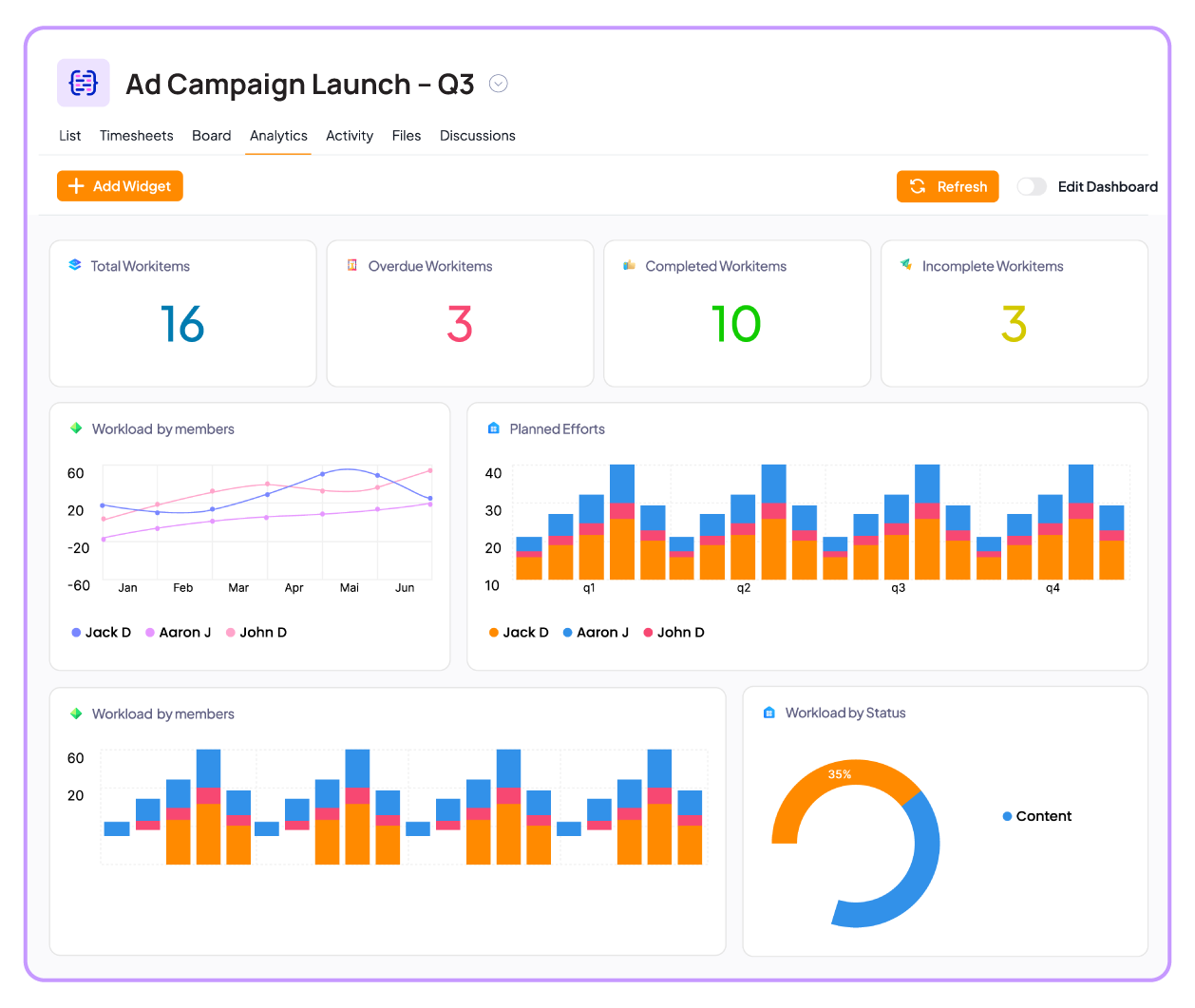
Different sub-teams often optimize for different outcomes. For example, SEO teams want traffic, and the sales team looks for conversion-ready leads. Without coordination, goals start to conflict or pull in different directions.
How it impacts teams:
Each team might hit its target, but the campaign still falls short as a whole. Messages feel fragmented, and handoffs are clunky, making internal teams feel disconnected. This results in growing cross-functional friction, especially with sales or product teams working from a different rulebook.
How to fix it:
Start projects with shared, defined KPIs and planning rituals. Marketing team collaboration should happen through a shared dashboard, aligning timelines, tasks, handoffs, and goals from day one. Custom templates can reflect your unique process, while cross-team permissions keep everyone informed without overwhelming them.
Pro tip: Use the analytic dashboard in 5day.io to track contributions across roles, so each team member sees how their work feeds into the bigger picture.
Effective communication strategies for marketing departments
Solutions alone don’t build stronger communication. It’s the systems, behaviors, and rhythms around them that make clarity sustainable. Below are five effective communication strategies for marketing departments to stay aligned, not just during campaigns, but across the entire work lifecycle.
1. Build a communication operating system
Create a working model that outlines how your team communicates, shares updates, escalates blockers, and handles feedback. Think of it as the playbook that defines how marketing team collaboration happens. This should evolve with your team and projects, not stay static.
- Define communication norms for what goes where (for example, tasks in 5day.io project management software, quick pings in Slack)
- Use templated status check-ins at regular intervals
- Document processes that repeat so new members can get up to speed without guesswork
2. Establish cross-functional communication practices
Instead of more meetings, create intentional, lightweight team rituals that keep alignment strong without draining time. The best rituals are predictable, short, and focused. For example:
- Weekly team stand-ups (20 mins max)
- Monthly cross-functional project reviews
- Post-campaign debriefs with shared takeaways
- Quarterly retrospectives that focus on improving communication itself
3. Normalize collaboration
Encourage your team to work transparently without silos or hierarchy. That doesn’t mean oversharing or creating unnecessary loop cycles. Instead, it means making the right work visible in the right place. For this, you can:
- Use project dashboards that show task status in real-time
- Encourage progress notes or status updates inside tasks
- Allow stakeholders to follow (not interrupt) work as it moves
4. Invest in communication skill building and not just tools
Of course, you need tools to improve marketing team communication. But even the best tech can’t fix unclear writing or vague feedback. Help your team sharpen the human skills needed for better collaboration.
- Run micro-trainings on writing effective briefs or giving clear feedback
- Provide templates for discussions, feedback, reviews, or handoffs
- Create space for difficult conversations and respectful disagreement
5. Create a culture of responsiveness, not reactivity
Good communication is consistent. Establish expectations for turnaround times, decision windows, feedback, and when to escalate something urgent.
- Set norms around response time by channel
- Use asynchronous updates for non-urgent work
- Encourage planned check-ins instead of interruptions
When paired with a flexible platform like 5day.io project management software, these strategies help teams not just communicate, but communicate with purpose, structure, and less stress.
Empower your marketing team through better communication
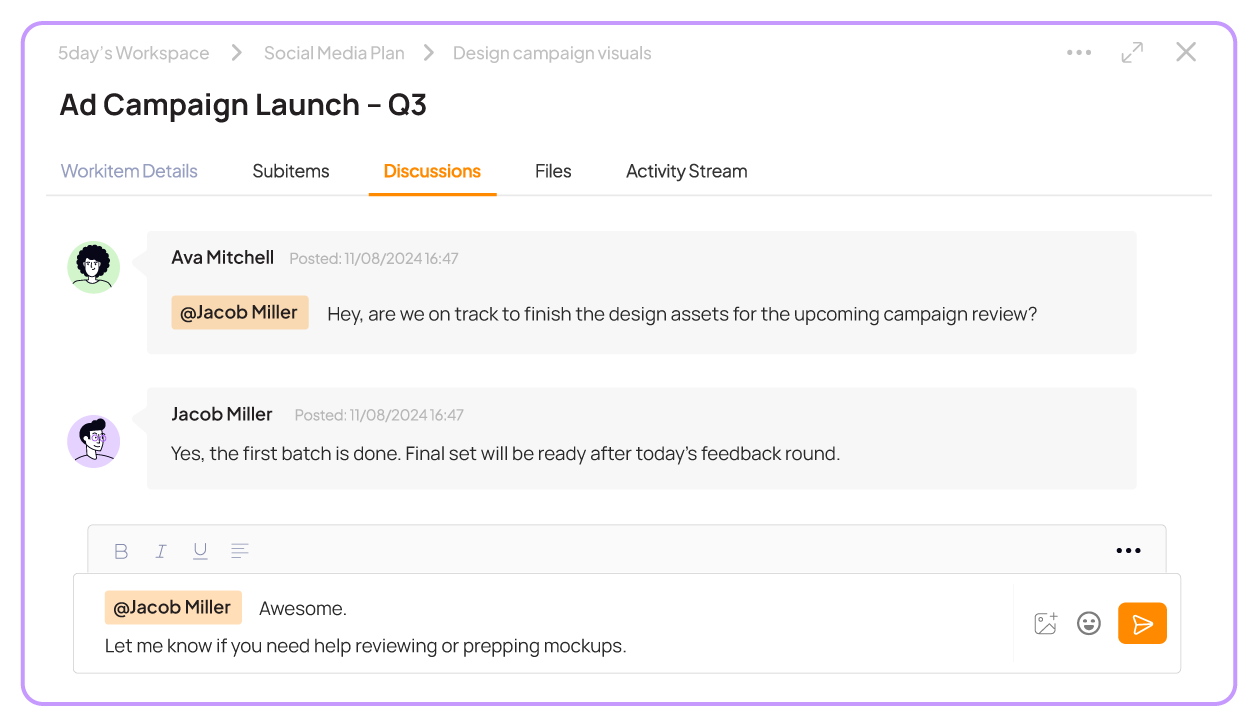
Improving communication is all about giving your team the space, clarity, and tools to work to their full potential. When you find the right solutions for marketing communication issues, and when communication flows well:
- Projects move forward with less friction
- Feedback becomes a driver of quality, not a blocker
- Teams feel confident, not constantly catching up
- Clients see stronger, more consistent delivery
The most resilient marketing teams treat communication like an evolving system. They pause to understand the marketing team collaboration challenges, find what’s working, adjust when friction shows up, and use tools like 5day.io project management software. This way, they build repeatable systems that support their speed and creativity.
So, choose one breakdown to solve first. Experiment. Iterate. Scale what works. Better communication doesn’t just save time; it builds momentum.
Now you know how to fix communication gaps in marketing, you need tools like 5day.io to double down on these solutions.
Ready to simplify your team’s communication and get everyone on the same page? Start with 5day.io today for 30 days free. No credit card. Just better marketing team collaboration.






